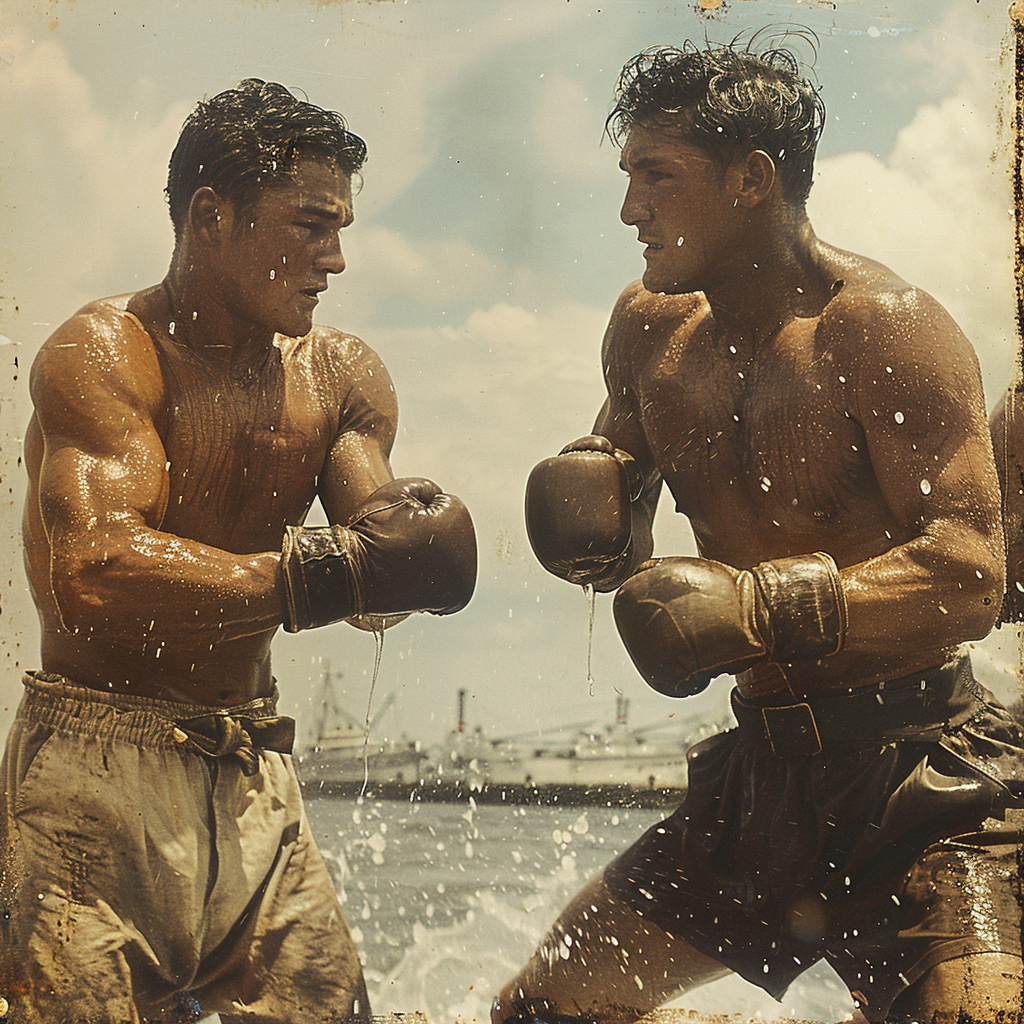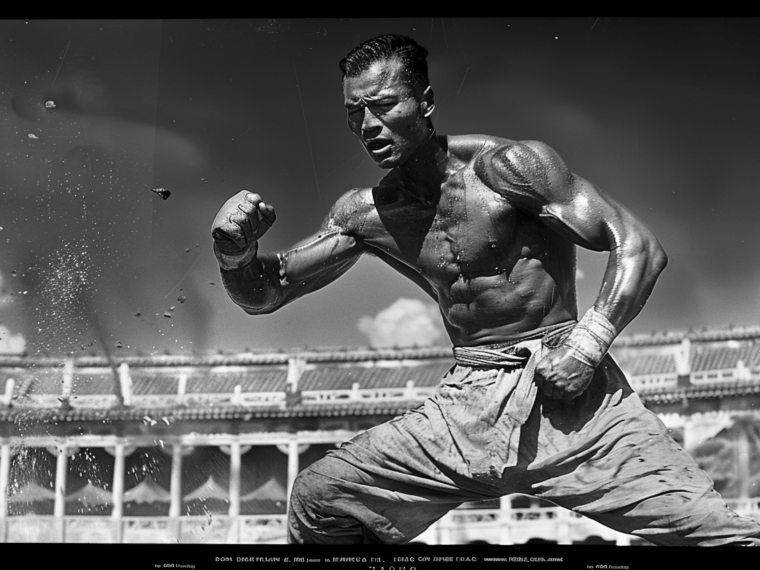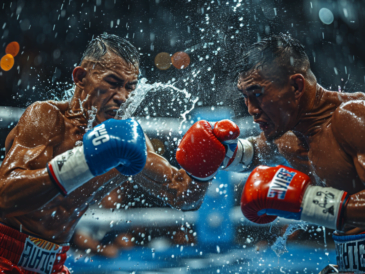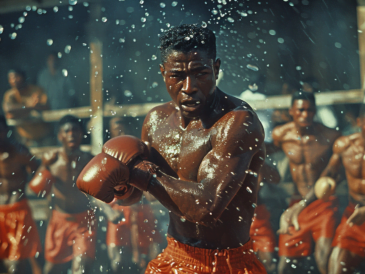Quick Glance at Kickboxing’s Past
Kickboxing started in Asia, where fighting styles have been around for ages. It took on its current shape in Japan during the ’50s and ’60s. There, fighters mixed boxing punches into their karate, creating something new. Soon after, kickboxing caught on in the U.S. and beyond, absorbing moves from Muay Thai and others over time.
What Kickboxing Is All About
As a sport, kickboxing has competitors squaring off with particular rules. As a martial art, people practice it for defense, fitness, or passion. Hitting with hands and feet, it uses both boxing and striking arts’ moves. Its popularity has soared, with events everywhere and loads of folks joining in to get fit, learn to defend themselves, or fight professionally.
The story of kickboxing goes way back to ancient martial arts times. It’s grown by taking in techniques from all over and changing into what we know today.
Ancient Fighting Forms and Their Influence
Kickboxing’s roots dig into early human combat skills, used for survival and rituals. With civilization upgrading, these fighting methods became more complex and organized, laying the groundwork for future martial arts influencing kickboxing.
Old-School Martial Arts’ Impact
Ancient martial arts are key to how kickboxing developed. Their ways of fighting, thinking, and craftsmanship have folded into kickboxing, making it richer and more powerful.
The Importance of Muay Thai History
In Thailand, Muay Thai is huge. It’s called “the Art of Eight Limbs” for its use of hands, elbows, knees, and legs in battle. Muay Thai’s heavy strikes shaped modern kickboxing big time.
Karate’s Role in Kickboxing Moves
Karate, started in Okinawa, Japan, has left a big mark on kickboxing. Its focus on sharp hits, blocks, and quick comebacks has easily blended into kickboxing tactics.
How Western Boxing Melded with Kickboxing
The punching game and footwork of Western boxing have also amped up kickboxing. Mixing the careful punches and guards of boxing with martial arts’ kicks made a fast-paced, solid fight style.
Kickboxing is unique; its origins trace back to a mix of traditional martial arts with boxing. This combo brought about a sport that values both foot and fist skills.
How Kickboxing Became Its Own Sport
Kickboxing has grown into a sport in its own right, shaped by different cultural fighting styles. It aims to be a lively and practical form of combat.
The Growth Timeline of Kickboxing
Kickboxing’s history is complex, expanding over many years. During this time, it polished its rules and ways of fighting. This era also included the start-up of kickboxing groups all over the world, which helped the sport gain global recognition.
Important People in Kickboxing
Several key people had a huge impact on the rise of kickboxing. These pioneers devoted themselves to developing the sport. They put together competitions, set up new rules, and improved training practices that are still in use today.
The Influence of Cultural and Geopolitical Factors
Cultural and geopolitical factors have deeply shaped kickboxing’s evolution. As the sport spread across different areas, it mixed with local fighting styles, which led to a mix of unique versions. Furthermore, big global moments and the growing influence of the sports community internationally helped push kickboxing into the limelight, turning it into a widely enjoyed and esteemed sport.
Kickboxing’s journey from its early days to its current status as an international sensation is quite the story. It began as a fusion of several martial arts that has changed over time. Originally, it was a means for fighters to compete more intensely and really see how good they were. This combination of different martial traditions set the stage for modern-day kickboxing.
How Kickboxing Went Global
Kickboxing rocketed to international popularity as it morphed and blended with various cultures. Television and other media were critical, broadcasting exciting matches to viewers around the world. As global sports events carried it further, kickboxing gained a following and expanded well beyond its origins.
Media and Big Tournaments Make Kickboxing Famous
Extensive media showcase and major global tournaments turned kickboxing into a common term. These venues highlighted the sport, creating legends out of fighters and pulling in massive audiences.
Kickboxing’s Many Forms and Traditions
Kickboxing is now an umbrella for many approaches and tactics. Different schools have thrown in their own twists, weaving a complex and captivating mix. This variety shows just how flexible the sport is, making it appealing to a wide range of people.
Japanese Kickboxing: Origins and Key Characteristics
Originating within Japan’s rich martial arts culture, Japanese kickboxing burst onto the scene in the 1950s. It’s known for its emphasis on quickness and nimbleness. This fighting style merges Karate and Muay Thai techniques to create something really special and engaging.
American Kickboxing: Development and Global Influence
American kickboxing came to life in its own way. At the start, it favored boxing moves combined with classic martial arts kicks. As time went on, it started to draw from styles everywhere, making a big mark on worldwide kickboxing. Nowadays, American kickboxers get lots of praise for their strong punches and technical know-how.
How Kickboxing Became a Popular Workout and Sports Trend
Gone are the days when kickboxing was just for combat professionals. Now, it’s made its way into everyday gyms and workout plans all over, attracting those who want to spice up their exercise regime. The sport’s leap into the general sports scene has widened its fan base, showing that kickboxing is now a well-rounded and lasting activity.
This combat sport is a blend of fighting techniques with origins in many cultures and old traditions. It’s fascinating how kickboxing has evolved by combining different types of boxing and martial arts from around the world. This mix of various styles has played a big role in shaping the complex character of kickboxing as we see it today.
Modern Kickboxing and Its Roots

To understand the development of kickboxing, we should note that it’s a mix of old practices. It includes parts from Japanese Karate and Thai Boxing which helped create a distinct style focused on kicking, punching, and quick movement.
How Old Techniques and Beliefs Are Kept Alive in Today’s Kickboxing
Today’s kickboxing still reflects past beliefs and methods. Although it has changed over time, important values like discipline and respect are still key. Fighters now still use and adapt old techniques, showing the lasting influence of the sport’s past.
Kickboxing’s Constant Changes: Blending with Other Fights Styles and Meeting New Demands
Kickboxing is always changing, adding parts from different fight styles to stay fresh and interesting. It keeps up with modern demands by offering not just a competitive edge but also great exercise options. Kickboxing is adapting every day, keeping its deep roots but fitting into today’s world.


